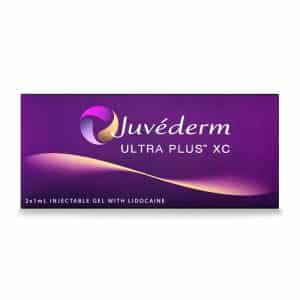Facial fillers have become a cornerstone of modern cosmetic treatments, with the global dermal filler market projected to reach $6.28 billion by 2028. These minimally invasive procedures are highly sought after for enhancing facial contours and reducing the appearance of wrinkles.
Neuramis, a popular hyaluronic acid-based filler, is known for effectively addressing facial volume loss and wrinkles. It is designed to deliver natural-looking results, but it also has unique characteristics that distinguish it from other fillers on the market.
In this article, we will delve into the side effects of Neuramis filler, providing a comprehensive overview of potential risks that professionals should consider before administering treatment.
Key Takeaways
- Neuramis fillers are hyaluronic acid-based dermal fillers designed to reduce wrinkles, add facial volume, and enhance overall facial aesthetics.
- Common side effects of Neuramis fillers include swelling, bruising, redness, tenderness, itching, and discomfort, which are usually temporary and mild.
- Rare and long-term side effects may include allergic reactions, nodules, and migration of the filler material, but these are uncommon.
- Preventive measures and treatment options are available to manage and mitigate Neuramis filler side effects, and consulting with an experienced practitioner is essential to minimize risks and ensure safe, optimal results.
About: Medical Spa RX provides medical practices with premium products at the best prices. If you’re looking to buy Neuramis online for your practice, the sales representatives at Medical Spa RX can give you guidance.
Understanding Neuramis Fillers and Potential Side Effects

Neuramis fillers are a type of dermal filler made from hyaluronic acid, a substance naturally found in the skin. These fillers are designed to reduce the appearance of wrinkles, add volume to facial features, and enhance overall facial aesthetics. Neuramis fillers are known for their smooth consistency and long-lasting results.
They work by injecting hyaluronic acid into the skin, which binds with water molecules to plump and hydrate the treated area. This process helps to smooth out wrinkles, fine lines, and folds, providing a more youthful and refreshed appearance. The hyaluronic acid in Neuramis fillers also stimulates collagen production, enhancing skin elasticity and firmness over time.
Common Side Effects of Neuramis Fillers

- Swelling and Bruising: One of the most common side effects of Neuramis fillers is swelling and bruising at the injection site. This occurs as a natural response to the needle insertion and the filler material. Swelling and bruising typically subside within a few days to a week, but applying ice packs and avoiding strenuous activities can help reduce these effects.
- Redness and Tenderness: After receiving Neuramis dermal fillers, these are also common around the treated area. These symptoms are usually mild and temporary, often resolving within a few hours to a couple of days. Keeping the area clean and avoiding excessive touching can help minimize redness and tenderness.
- Itching and Discomfort: Some individuals may experience itching and discomfort following Neuramis filler injections. This can be due to the skin’s reaction to the filler or the injection process itself. Itching and discomfort are generally short-lived, but if they persist or worsen, it is important to consult with a healthcare professional to rule out any complications.
Rare and Long-Term Side Effects of Neuramis Fillers

- Allergic Reactions: Although uncommon, allergic reactions to Neuramis fillers can occur. Symptoms may include redness, swelling, and itching at the injection site. These reactions are often due to hypersensitivity to the filler components, though Neuramis uses non-animal hyaluronic acid, reducing the likelihood of severe allergic responses.
- Nodules: Nodules, or firm lumps under the skin, can develop after Neuramis filler injections. These are often caused by granulomatous inflammation, where the body reacts aggressively to the filler material, treating it as a foreign substance. In some cases, sterile abscesses—pus-filled areas without bacterial infection—can also form.
- Erythema: In rare instances, Neuramis fillers can migrate from the original injection site to other areas of the face. This migration can alter the intended appearance and may require corrective procedures. Monitoring the injection site for unusual changes can help in early detection and management of this side effect.
Managing and Mitigating Neuramis Filler Side Effects
Minimizing side effects from Neuramis fillers starts with taking preventive measures before, during, and after the procedure. To reduce the risk of complications, it’s essential to consult with a qualified practitioner experienced in using these fillers. They can also compare different filler options, such as Neuramis Deep vs Juvederm, to determine the best choice for your specific needs and goals.
Treatment Options for Adverse Reactions
- Swelling and Bruising: Apply ice packs immediately after treatment to reduce swelling and bruising. Arnica creams and anti-inflammatory medications may also help ease symptoms.
- Nodule Formation: Massaging the treated area gently can prevent lump formation. In persistent cases, hyaluronidase can be injected to dissolve the filler.
- Allergic Reactions: Antihistamines can be effective for mild allergic reactions, but severe cases may require corticosteroids or medical intervention.
Conclusion
Neuramis fillers are effective for rejuvenating the skin, but they can cause side effects like swelling or redness, and in rare cases, more serious reactions such as allergies. Consulting with an experienced practitioner is essential, as they can help minimize risks and ensure safe, optimal results.
FAQs
1. What are Neuramis filler side effects?
Like other cosmetic treatments, neuramis fillers can have side effects. These might include redness, swelling, or bruising at the injection site.
2. Are these side effects common with all users of Neuramis fillers?
Not everyone will experience these side effects. However, it’s essential to know them before deciding on this treatment.
3. How long do these side effects last?
Any discomfort or visible signs, such as redness, should subside within a few days post-treatment.
4. Should I consult a doctor if I experience severe side effects from Neuramis fillers?
If you notice severe reactions or if your symptoms persist for more than a week after treatment, seek medical attention immediately.
References
Fortune Business Insights. (2021). Dermal Fillers Market Size, Share & COVID-19 Impact Analysis. Retrieved from https://www.fortunebusinessinsights.com/dermal-fillers-market-103379
Lafaille, P., & Benedetto, A. (2010). Fillers: contraindications, side effects and precautions. Journal of cutaneous and aesthetic surgery, 3(1), 16–19. https://doi.org/10.4103/0974-2077.63222





















